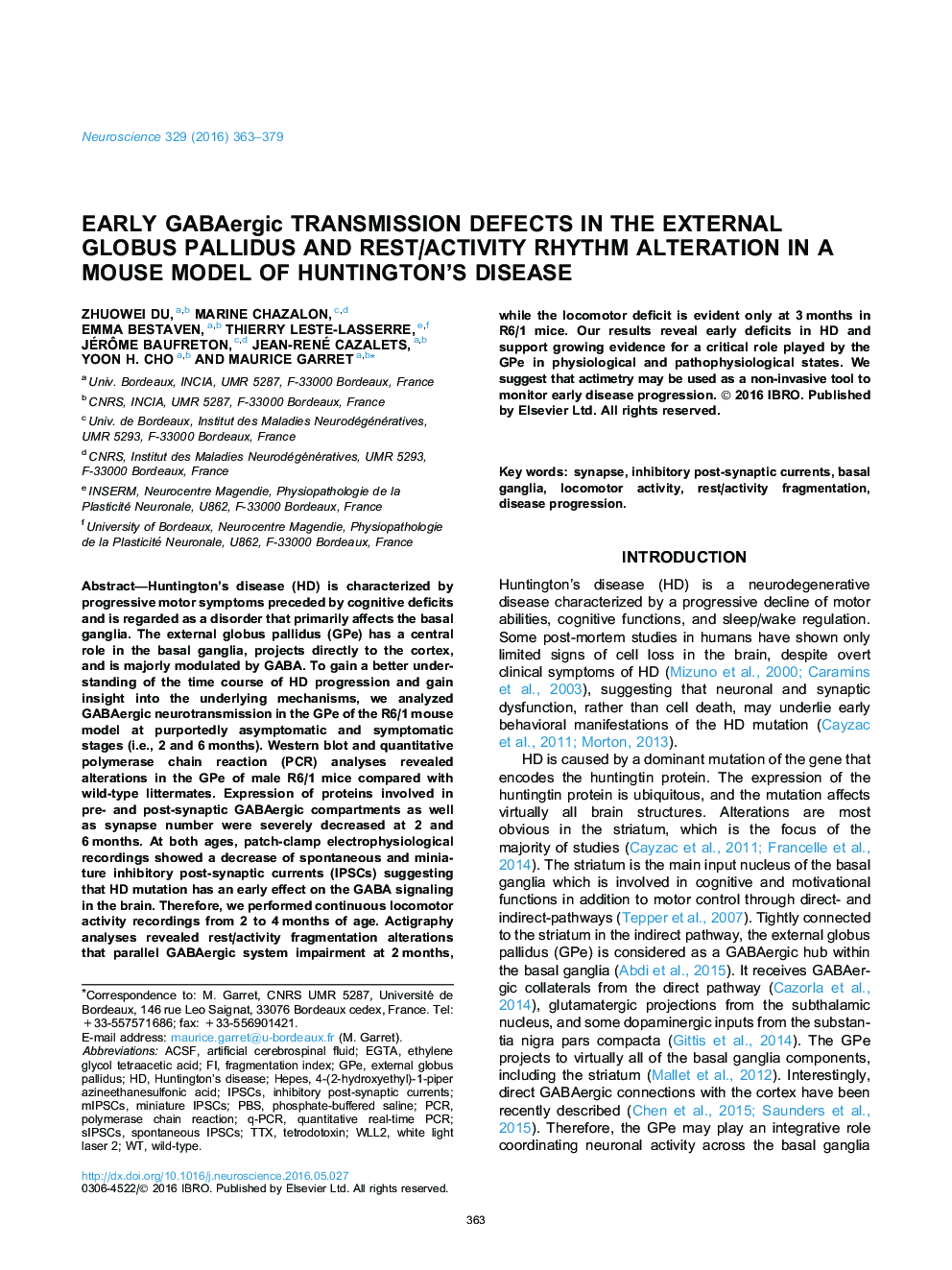| Article ID | Journal | Published Year | Pages | File Type |
|---|---|---|---|---|
| 6271058 | Neuroscience | 2016 | 17 Pages |
â¢Reduced GABAergic protein expression in the external globus pallidus of R6/1 mice.â¢Early reduction of GABAergic neurotransmission and synapses in R6/1 mice.â¢Rest/activity rhythm is altered early in R6/1 mice revealing early sleep disturbances.â¢Early functional and behavioral alterations in the R6/1 model of Huntington's disease.â¢Our data reveal deficits at a young age when mice have been considered asymptomatic.
Huntington's disease (HD) is characterized by progressive motor symptoms preceded by cognitive deficits and is regarded as a disorder that primarily affects the basal ganglia. The external globus pallidus (GPe) has a central role in the basal ganglia, projects directly to the cortex, and is majorly modulated by GABA. To gain a better understanding of the time course of HD progression and gain insight into the underlying mechanisms, we analyzed GABAergic neurotransmission in the GPe of the R6/1 mouse model at purportedly asymptomatic and symptomatic stages (i.e., 2 and 6Â months). Western blot and quantitative polymerase chain reaction (PCR) analyses revealed alterations in the GPe of male R6/1 mice compared with wild-type littermates. Expression of proteins involved in pre- and post-synaptic GABAergic compartments as well as synapse number were severely decreased at 2 and 6Â months. At both ages, patch-clamp electrophysiological recordings showed a decrease of spontaneous and miniature inhibitory post-synaptic currents (IPSCs) suggesting that HD mutation has an early effect on the GABA signaling in the brain. Therefore, we performed continuous locomotor activity recordings from 2 to 4Â months of age. Actigraphy analyses revealed rest/activity fragmentation alterations that parallel GABAergic system impairment at 2Â months, while the locomotor deficit is evident only at 3Â months in R6/1 mice. Our results reveal early deficits in HD and support growing evidence for a critical role played by the GPe in physiological and pathophysiological states. We suggest that actimetry may be used as a non-invasive tool to monitor early disease progression.
